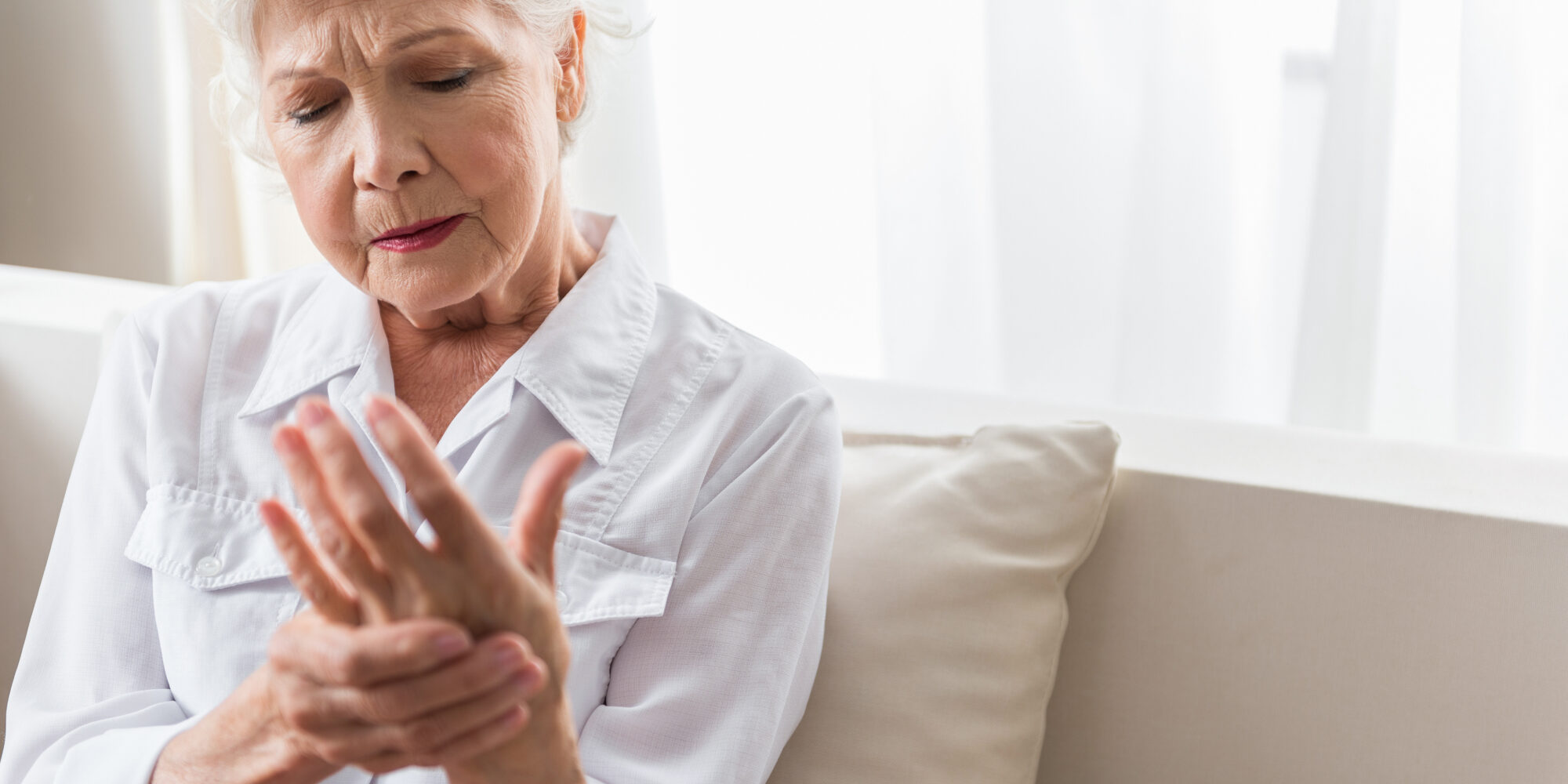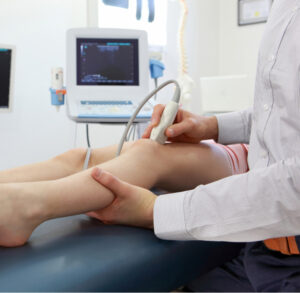Why your joints give you discomfort or pain, and what you can do about it
You’ve had an unfortunate sprain? Been sleeping in a bad position? Riding a bike and now your knees ache? The vast majority of people write off joint discomfort for everyday reasons and do not consider this a cause for concern. When discomfort begins to interfere with your daily activities more and more frequently affecting the quality of life it may turn out that the situation is already severely neglected. It is important to remember that prevention can significantly help correct the situation.

What triggers the pain?
Joint pain occurs due to irritation of the nerve endings starting from the synovial joint capsule. Toxins, autoimmune processes in the body and inflammatory processes in the joints can act as direct irritants. The inflammatory processes, even if they start not directly in the joint but, for example, in the adjacent muscle, can act as an indirect irritant, which causes its spasm and affects the functioning of the joint. Sometimes joint pain accompanies acute viral diseases – everyone knows “bone aches” when one has the flu.
Ageing-related changes, dystrophic changes, congenital pathologies, which result in improper formation of joints, as well as genetics, overweight, excessive sports regimen or, vice versa, a sedentary lifestyle and unhealthy diet also belong to the contributing factors. Our body is a perfect machine, it is designed to move, so it is not wise to confine it between your sofa, your car and your PC desk.
Types of joint pain

- Night or chronic pains. Discomfort may intensify at night when the body is resting. It is attributed to the fact that while your body is in a long period of immobility, fluid stagnates in the joint and its blood supply slows down. However, nocturnal pain can be caused by arthritis and other rheumatic conditions, such as ankylosing spondylitis. If the pain bothers you more often than once a month, you need to see a doctor.
- Mechanical pain. This sort of nasty discomfort is caused by the physical load during the day or pressure on the joint. Such pain usually worsens in the evening, after a night’s rest they disappear. It can also be a sign of degenerative processes in the joint. If you notice that your joints ache after the gym, or a condition known as lumbago is bothering you, do not put the doctor’s consultation on the “back” burner:)
- Start pain. You wouldn’t believe how many people experience this type of condition every single day. So many of us are actually glued to the computer screens rolling in our chair across the home office instead of getting up and walking. And we often seem to overlook that little prick or stiffness as we stand up. It occurs at the beginning of any movement when the joint was at rest until that time (binge-watching Netflix for five hours straight?). When the joint warms up, the pain subsides or disappears completely. Usually, such pain signals a sedentary lifestyle, and you can get rid of it if you start having regular exercise.
- Referred pain, also called reflective pain, is pain perceived at a location other than the site of the painful stimulus. It occurs with diseases of internal organs or after childbirth in women. If you feel something like that, please, schedule an appointment with a relevant specialist as soon as possible.
- Inflammatory type of pain is associated with the body’s response to an infection, allergic or autoimmune process. It is usually accompanied by swelling of the joint, redness of the skin around it, and a general increase in temperature. If the problem persists after recovering from the flu or a severe cold, it is necessary to visit an endocrinologist and immunologist to detect the cause of the inflammation and treat it.
A little geography
In the United States alone, up to $ 8.4 billion is spent annually for treatment of joint diseases, which is one in five dollars of all direct medical expenses. The indirect damage due to the loss of disability of the population reaches almost $11 billion a year.
In the European Union, musculoskeletal system-related diseases also require one of the largest expenditures in the healthcare sector. In the UK, the estimated cost of general practitioner consultations for musculoskeletal disorders is estimated to be £1.34 million per year, second only to cardiovascular disease.
In Germany, the cost of treating diseases of the musculoskeletal system has exceeded €28.5 billion per year, which represents more than 11% of total healthcare costs. Let’s compare a few more figures. Turkey spends €9,431 per year on medicines for one rheumatoid arthritis patient, whereas Germany spends €21,349. It is also worth understanding that these numbers do not reflect the further damage to the economy caused by lower labor productivity and early retirement due to pain in joints.
Scandinavian scientists found out that the morning joint stiffness that causes difficulty moving around with more than 70% of people leads to them seeking part-time employment since they tend to arrive too late at the office and are often penalized by the management.
Here’s the curious fact. Compared to most European countries, the Mediterranean region reports a significantly smaller share of joint-related diseases. The further north the country is located, the bigger the number of people who complain about joints. There is no scientifically proven explanation for this, yet most doctors are inclined to believe that long dark winters and rotten rainy weather lead to a more acute deficiency of vitamin D, which is necessary for the body to absorb calcium and phosphorus that are vital for joint health.
Believe it or not, the absolute leaders in joint health have become … North Africa and Southeast Asia, regardless of the level of development or accessibility of medicine in these regions. Complaints of pain in the hip joints are three times less common than in Europe, and pain in the knees troubles people there half as often! So far, there is no sufficient evidence that would explain this phenomenon. Some scientists tend to believe that credit should be given to greater physical activity, both forced (in developing countries people have to hustle a lot) and conscious (in Asia, the idea of an active lifestyle, outdoor gymnastics and various stretching practices is actively promoted). Others think it’s all about what they eat there, and namely, the abundance of healthy fats in the diet, a minimum of carbohydrates, and the predominance of fish as a source of protein over meat. However, further research continues…
Healthy tips
Remember a simple thing, prevention is always better than cure. Protect your organism by following these simple preventive measures:
• Make sure you move a lot. Having said that, avoid heavy gym weights (remember about your knees and your fragile back), and sudden movements that can lead to injury or sprains. Don’t overdo it in the gym, and consider trying swimming, yoga, stretching, walking or skiing.
• Avoid exposure to low temperatures. When you stay outdoors in the cold for a long time, your muscles get tensed, which puts extra load on the joints. All you need to enjoy long walks in the snow is quality thermal underwear, high-quality membrane waterproof outerwear and comfortable shoes with orthopedic shoe insoles!
• Use orthopedic mattresses. They help your body to maintain a physiologically correct position during sleep. This will also help reduce the risk of joint disease.
• Monitor your diet. Cut down on spicy, fatty, fried, and canned foods. Don’t go hard on carbohydrates either. Include foods that are good for your joints. Among them are turmeric, ginger, foods rich in vitamin D and sulfur. You can read the relevant research called “Dietary garlic and hip osteoarthritis: evidence of a protective effect and putative mechanism of action” that indicates that sulfur-containing foods, such as garlic, have a beneficial effect on joints and serve as the prevention of discomfort.
Furthermore, it is a great idea to include more foods with vitamin C in your diet for it contributes to the normal formation of collagen necessary for joints.
Of course, in our modern hectic life, it is nearly impossible to control your diet and make sure you are getting all the ingredients you need every day. So, you see, nutritional supplements were created for a reason. Let’s compare the following facts. Curcumin (the main component of turmeric) when consumed in natural form, is absorbed by the human body by 3%. At the same time, supplements contain curcumin in a concentrated form and are easily absorbed. Ginger has a specific flavour, someone may find it hard to eat it daily. As an extract, however, it is easier and more comfortable to use.
In short, if you have doubts whether you get the balanced diet and the sufficient amount of all the vitamins and microelements, perhaps you should pay attention to the supplements that contain all the important ingredients, formulated specifically to enhance each other’s action: this is called a synergistic effect.
Your joints do need your attention and help, even though there is no universally effective method. The combination of an active lifestyle, sport, healthy diet and attention to the signs your organism sends to you is the effective tool kit that will make a difference. Just remember that it is always simpler and cheaper to prevent the disease than deal with it when it has already done the damage to your body and now you have to live with it.
Learn more about Joints, SUPPLEMENT+
What to learn more? Read here:





